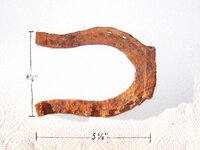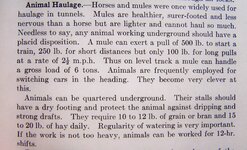tamrock
Gold Member
- Jan 16, 2013
- 15,447
- 31,341
- Detector(s) used
- Bounty Hunter Tracker IV
- Primary Interest:
- All Treasure Hunting
I picked this up the other day at a abandoned coal mine sight I find many old relics at. Is this a shoe made with any special purpose in mind such as a mule used possibly at the coal mine that stopped production around 1938?. What may this rectangle piece of metal attached at the toe end be for? The shape is curved inward on the sides. Others I've found are curved outward. It measures 5-5/8'' L x 4-1/8'' W








 My grandfather was 80 during the moon landing in the late 1960's The man past in 73 and too the day of his death always persisted the moon was made of Cheese... Heck the man was born in 1891.
My grandfather was 80 during the moon landing in the late 1960's The man past in 73 and too the day of his death always persisted the moon was made of Cheese... Heck the man was born in 1891.

